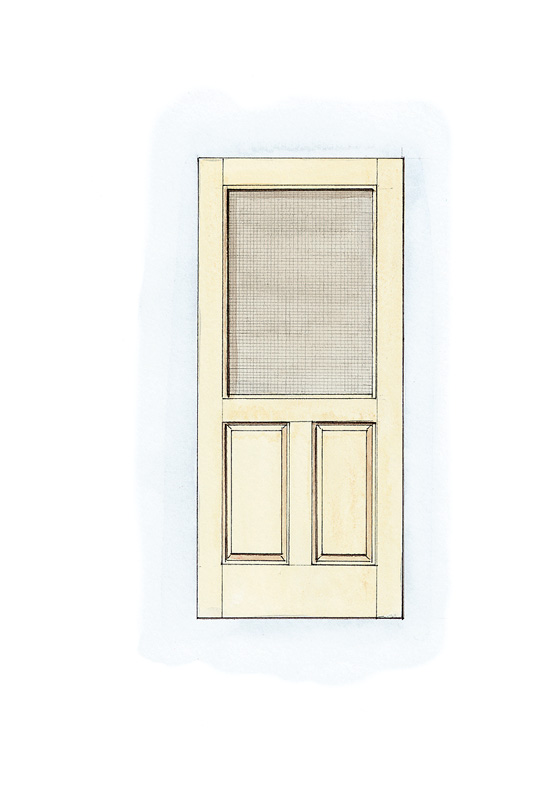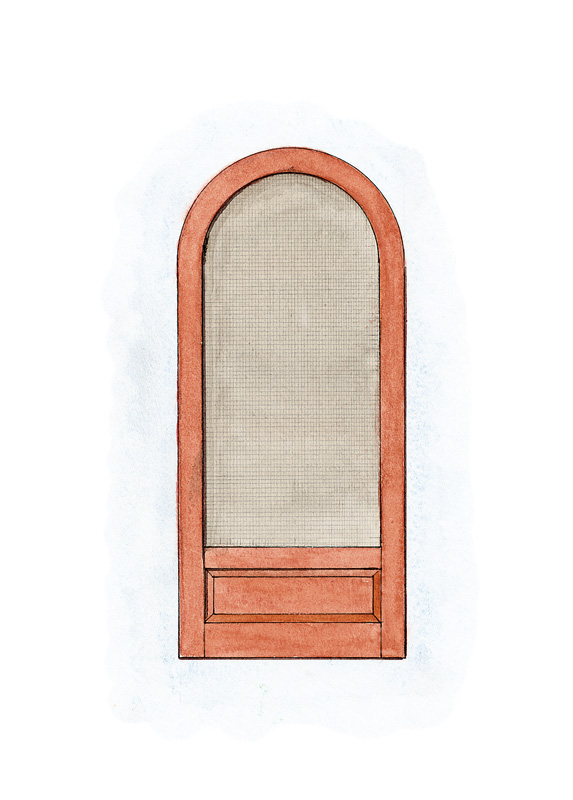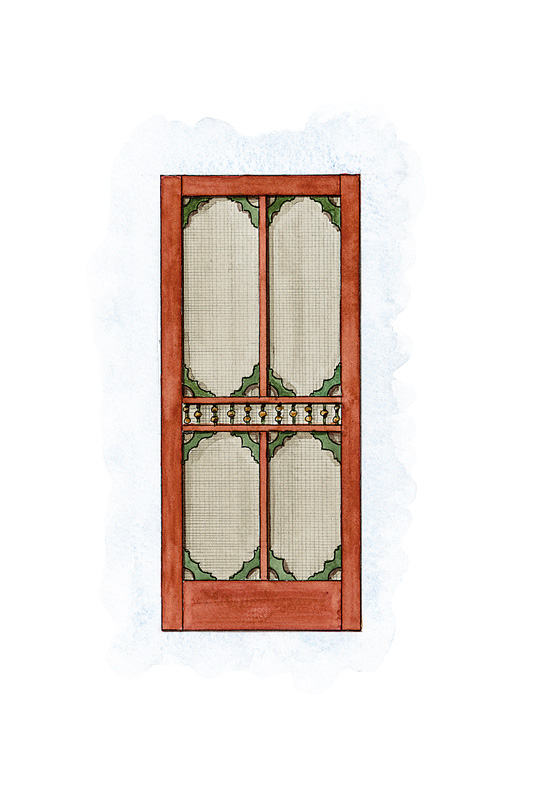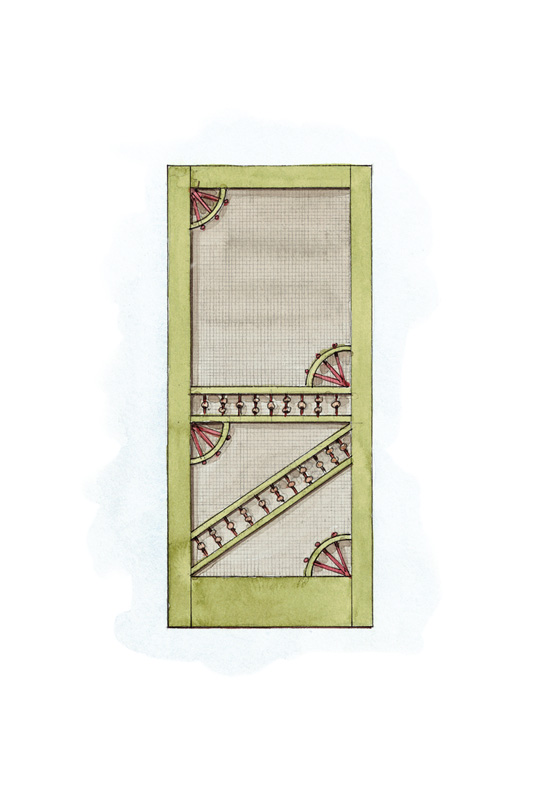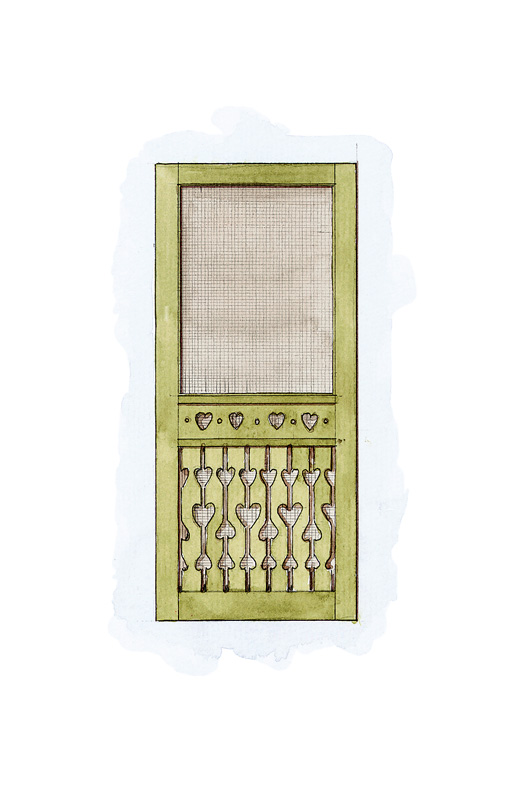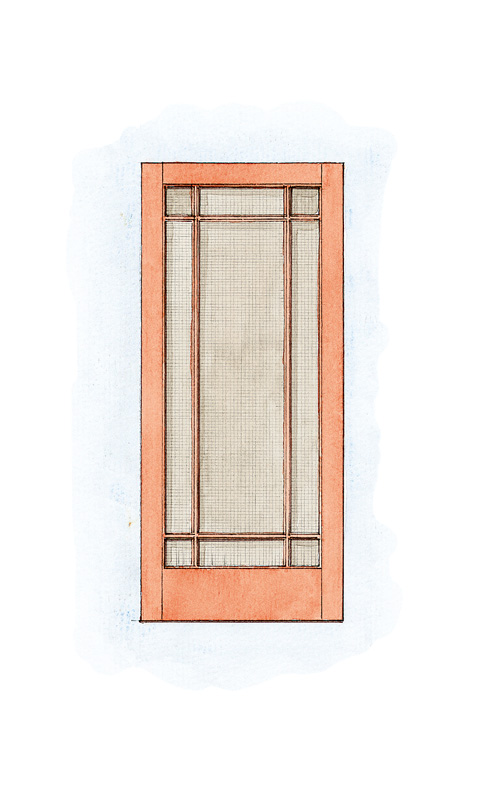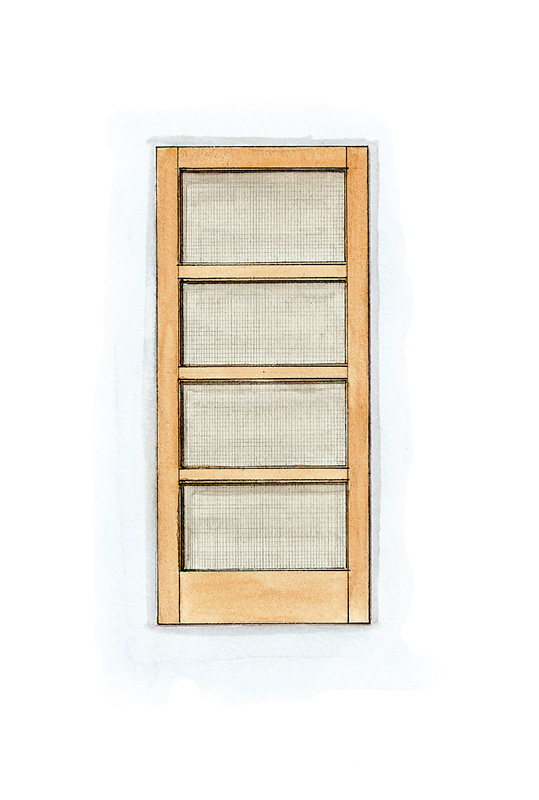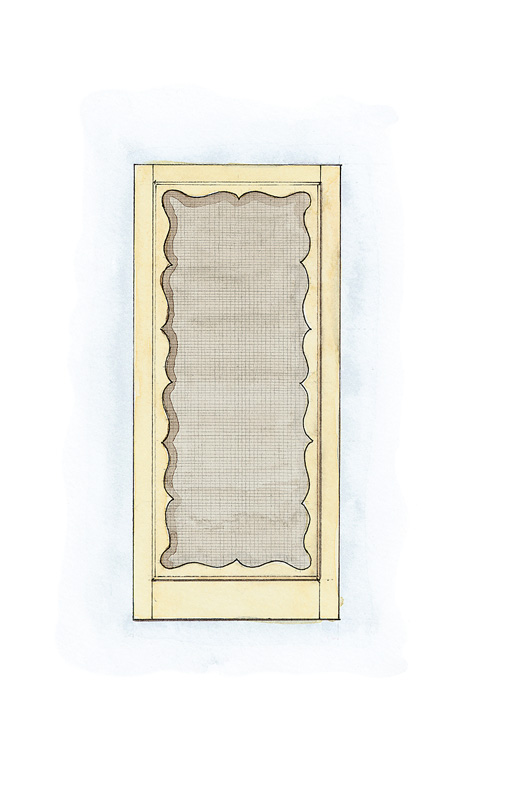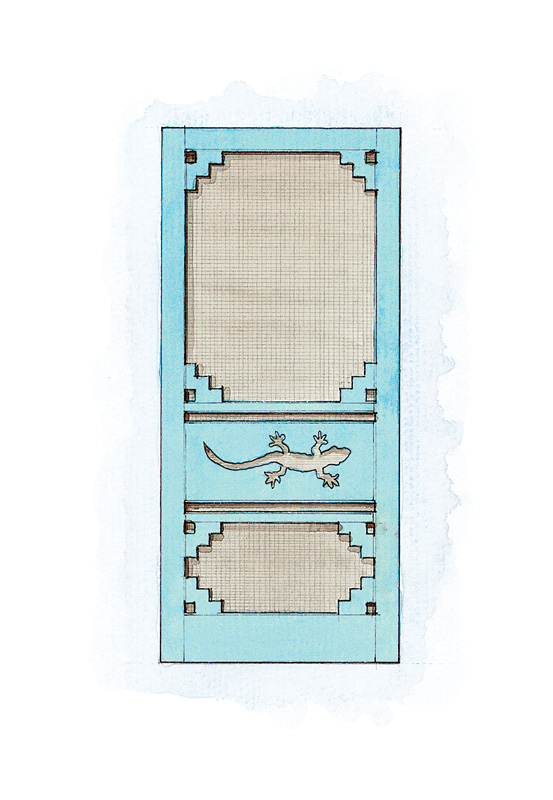(Photo: Scot Zimmerman)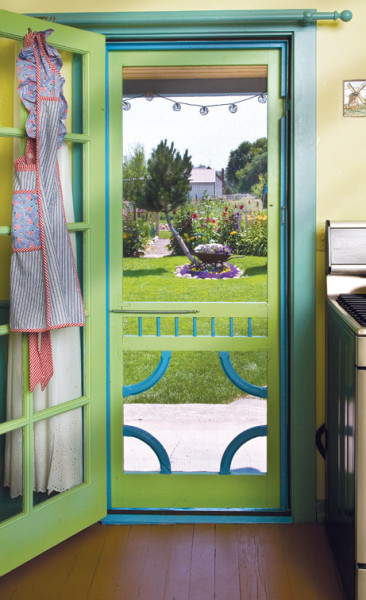
The screen door as we know it dates to the 19th-century Victorian era, when machinery first allowed mass production of wire and thus woven wire for screening. At the same time, the technology developed for high-volume duplication of wood frames and sawn (or turned) ornament. Ornate Victorian styles were superseded by bungalow doors and Colonial Revival models. All are available today; try to match the screen door to the house’s period, style, and degree of fancy. Sometimes the best bet is to match the style and proportions of the front door. It’s often best to paint the screen door the same color as the prime door.
By the mid-Victorian era, many houses were built with a split or double front door (think Italianate style), a trend that lasted into the 1890s. The screen doors followed the size and shape of the primary doors. Wider, single doors (as in the Queen Anne style) became fashionable in the 1880s and have dominated since. Those beloved “gingerbread” screen doors date to the 1880s and ’90s, and are most appropriate for houses of that era.
Bungalow-era doors are well proportioned but rather plain; they look good not only on Arts & Crafts houses, but also on traditional older homes and on those dating to 1900–1940.
A screen door is subject to stress and flexing, so look for sturdy construction (usually pegged mortise-and-tenon joints). Hardwoods are stable and resist rot. They may be clear finished (popular during the late 19th century), or painted. You have options for the screening itself. Bronze is traditional and outlasts all other materials; copper and brass are good, too. Modern aluminum screening is less expensive and has been around for a long time.
Earlier houses from Louisiana to New England had louvered panels, similar to shutter-blinds, at the door, instead of a secondary screen door. Louvered doors are being made today with optional screen and storm panels—more practical, and a historical look with great curb appeal. The front hall, of course, will be coolly dark if you go this route.
An overview of screen types
Screen mesh on rolls is readily available in fiberglass, aluminum, and bronze, through your building-supply store or online. Fiberglass is cheapest, followed by aluminum—but so little material is used in a door, it’s worth going with a long-lasting and traditional material. Brass, copper, and especially bronze screens really last while imparting a subtly historic look. (Fiberglass is more opaque than other choices.) Choose a mesh that suits the size of the opening; also, you’ll need a 20×20 mesh to keep those tiny no-see-ums out. Pet (or toddler) screening is several times stronger than the average and can be used in the bottom panel.
1. Traditional
This one is a standby for any house with classical trim and vertical emphasis in panels or windows. It’s also a practical design with no screening low in the doors.
2. Italianate
A rounded-arch door is the right option for round-top prime doors (often double). These may have an extra horizontal framing member for stability and screen protection.
3. Late Victorian
Gingerbread doors, dating to after the Civil War, feature sawn and turned ornaments. They may lend a fanciful historical look when used in otherwise plain doorways.
4. Anglo-Japanese
Diagonals, corner fans, and exotic motifs distinguish this subset of late Victorian designs, perfect for Stick Style, Eastlake, and Queen Anne houses ca. 1872–1890.
5. Chalet
Sawn cutouts mimic the balustrades and balconies of Alpine cabins; these charming patterns also work on cabins, cottages, and Dutch Colonial homes.
6. Prairie
Muntins crossed at the corners is a Prairie School design that quickly spread through millwork catalogs of the Arts & Crafts era. It provides a large screen area.
7. Bungalow
A notable change in doors of the bungalow era was the switch to horizontal panels. This sturdy design matches many prime and interior doors in houses coast to coast.
8. Colonial Revival
The piecrust or scalloped edge familiar from mid-century Early American kitchen valances reappears here, a quiet alternative to overly nostalgic “colonial” designs.
9. Southwest
With motifs of New Mexico, this door stands in for novelty designs—whether regional, or with exaggerated style (like a pointed arch), or personalized for house or owner.



